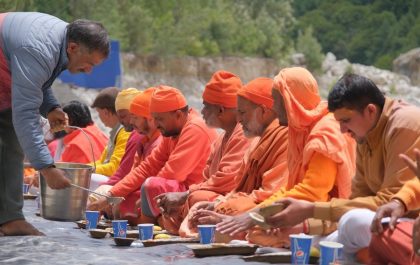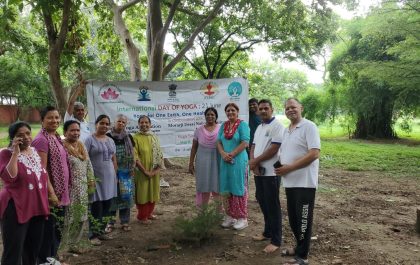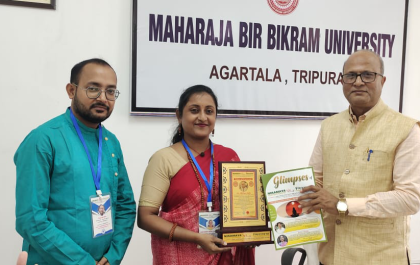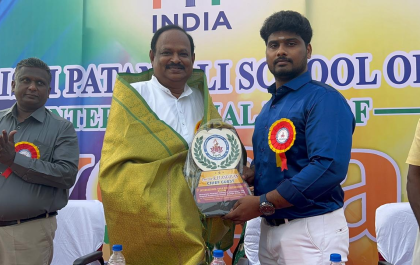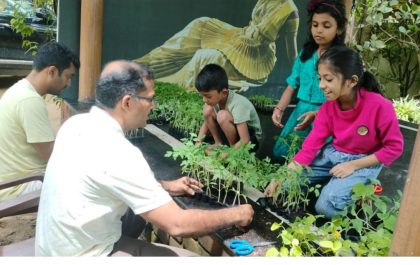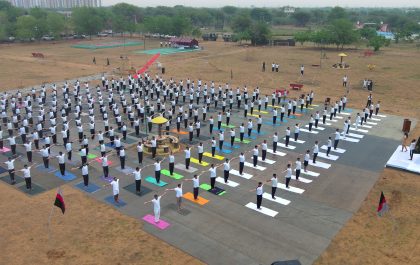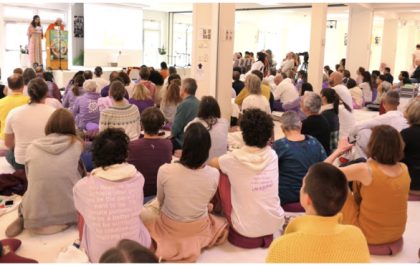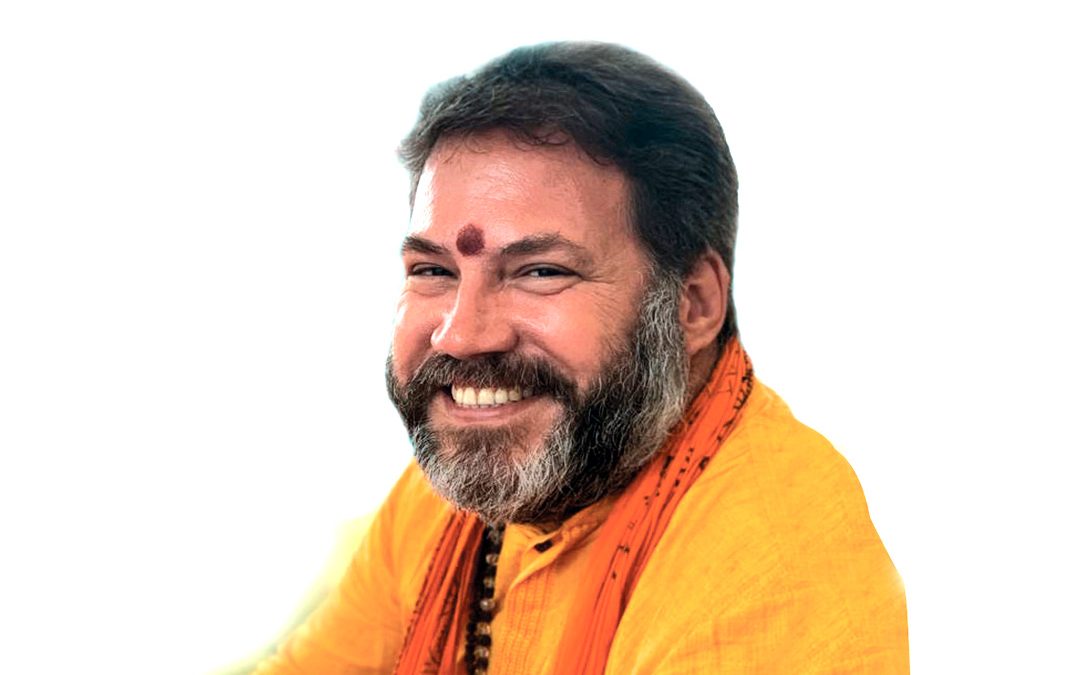Yoga is one of the most common words in the world today and carries various connotations depending on its usage. It has been defined in various manners as an art and science as well as the process of conscious evolution.
Swamiji Gitananda Giri Guru Maharaj has defined it as five-fold awareness that includes the initial awareness of how unaware we are that is then followed by a step-by-step development of awareness of body, emotions and mind with the final step being an ultimate awareness of awareness itself.
Yoga may be understood as being both the tools as well as the actual process of unification or w-holistic integration resulting in the union-reunion-communion of our individuality with our universality.
In modern times, I feel that the best way to understand this great way of life is as a conscious performance of skillful action without expectation. This is of course to be lived “24 x 7 x lifelong” and for me is both the ultimate destination of our inner search as well as the “now” of the entire journey itself.
Yoga is our cultural heritage and the great Rishis are our ancestors in more ways than one.
Spirituality is in our very genes and this physical and spiritual genetic potential enables us to experience the transcendental concepts of Yoga in their fullness. However we are hindered by the widely prevalent ignorance of the treasures we have inherited.
We have forgotten that we are the safekeepers of these treasures. These encompass the vast literature of our Vedas, Upanishads and classical texts such as the Yoga Sutras, Hatha Yoga texts, Tirumandiram, Tirukkural etc..
All of our fine arts like music, dance, drama, pottery, painting, handicrafts as well as the vibrant folk arts have a deep element of spirituality of Yoga running through them. This is also visible in our day-to-day life as Yogic concepts deal with how we eat, sleep, get up, interact with others etc (yuktahara-viharasya yukta-cestasya karmasu yukta-svapnavabodhasya yogo bhavati duhkha-ha. Bhagavad Gita -VI: 17).
Yogi Swatmarama in the Hathayoga Pradipika, one of the classical texts, gives us the assurance: “One who tirelessly practices Yoga attains success irrespective of whether they are young, old, decrepit, diseased or weak”. He gives us the guarantee that Yoga improves the health of all alike and wards off disease, provided we properly abide by the rules and regulations. (yuvaa vrddho ativriddho vaa vyaadhito durbalo pi vaaabhyaasaat siddhimaapnoti sarvayogeshvatandritah – Hathayoga Pradipika I:64)
In our day-to-day personal and interpersonal social life, Yoga provides us with a multitude of tools, concepts, attitudes and techniques through which we can attain inner contentment leading to happiness and spiritual realization while simultaneously creating harmony in all relationships.
All psycho-social qualities essential for healthy interpersonal relationships are cultivated when we live a life of Yoga that is in tune with the eternal dharma. These humane qualities include loving understanding, innate sensibility that sees other’s perspectives, compassion, empathy, respect, gratitude, fidelity and responsibility. One who is blessed with these qualities is indeed a divine blessing to the social life of their immediate family, friends, relatives and their society itself.
There are many important Yogic concepts that help guide us in shaping our personal lives as well as helping us to create harmonious interpersonal relationships that make up our daily social life.
The true Yogic life involves a sustained struggle against past conditioning, an attempt to control one’s inner environment in order to focus inward. Yoga is isometric, pitting one part of the body against the other and the Yogi strives to be “more perfect today, than he/she was yesterday”. The Srimad Bhagavad Gita says, “yogaha karmasu kaushalam” meaning thereby that Yoga is skill in action (Bhagavad Gita -II:50).
The real Yogi, immensely conscious and aware at the physical, mental and emotional levels, gains great control through that consciousness over all aspects of life thus developing a real skill in living. Part of that skill springs from his cultivated detachment, his ability to work for “work’s sake,” and not for the sake of the reward. He realizes that his duty is to do his best but that the ultimate result is not in his hands.
The Yogi performs the needed action not for the sake of the fruits of that action, but because it is good and necessary to do so. Such an attitude of mind produces consummate skill in whatever action the Yogi undertakes. Consummate concentration, consummate controls are all offshoots of good Yoga Sadhana.
This belies the age-old belief that the competitive spirit produces the highest skill. To this the Yogic answer is: detachment from the fruits of the action produces the greatest efficiency, for one is then emotions connected with “goal-oriented”, competitive thinking. The beauty of Yoga is that these abstract principles become concrete in the daily practice of the techniques available in the Yoga system.
Once the “seed of Yoga” finds fertile soil, these concepts grow naturally, slowly but surely taking root in all aspects of life. Yoga, which emphasizes the universal, is a perfect foil to those human activities which glorify the personal. The ego which is fixated only on its own shallow self will soon run into the blank wall of depression and despair, overwhelmed by its own superficiality. That striving spirit which looks within at the universal aspect of its own nature and sees the oneness of the whole of creation will find an endless fountain of inspiration and joy.
In short it may be safely said that the practice of Yoga as a unified whole helps the individual shift from an ‘I”-centric approach to a “we”-centric approach.
“Tasmad yogi bhavarjuna — be thou a Yogi” says Krishna (Bhagavad Gita -VI: 46).
May we all grow and glow in consciousness until we reach that highest state of consciousness, the state of Yoga.
Dr Ananda Balayogi Bhavanani
(Editor-in-Chief)
